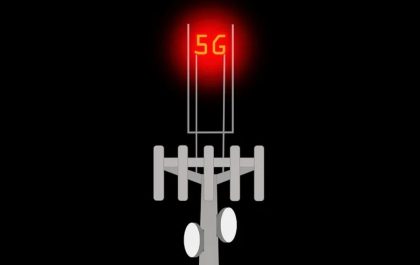Ever wondered what is AVC block list and why it keeps popping up in your Android settings? You’re not alone. I’ve been digging into this topic for years, and let me tell you – it’s one of those Android features that sounds way more complicated than it actually is.
Table of Contents
ToggleWhat is AVC Block List Android Feature?
The AVC block list is basically Android’s way of keeping track of problematic video codecs. Think of it as a bouncer at a club – it knows which troublemakers to keep out. When your phone encounters a video codec that’s known to cause crashes, freezes, or other issues, the AVC block list steps in and says “nope, not today.”
I remember working with a client whose phone kept crashing every time they tried to watch certain videos. Turns out, their AVC block list wasn’t doing its job properly. Once we sorted it out, the crashes stopped completely.
AVC Block List Meaning Explained Simply
Let me break down the AVC block list meaning in plain English:
- AVC stands for Advanced Video Coding (also known as H.264)
- Block list is a collection of items that are restricted or blocked
- Together, they create a safety net for your video playback
It’s like having a smart filter that knows which video formats might cause trouble for your specific device.
How Does the AVC Block List Work?
Here’s what happens behind the scenes:
When you play a video:
- Your phone checks the codec against the AVC block list
- If it’s on the list, Android uses an alternative codec
- If it’s not blocked, it plays normally
- The system learns from crashes and updates the list
The process is automatic:
- Video codec identification
- Block list comparison
- Safe playback or alternative codec selection
- Continuous learning and updates
Should I Turn Off AVC Block List?
This is probably the most common question I get. The short answer? Usually, no.
Here’s why keeping it enabled makes sense:
Benefits of keeping it on:
- Prevents video-related crashes
- Improves overall device stability
- Reduces app freezing during video playback
- Automatically handles problematic codecs
When you might consider disabling it:
- You’re experiencing video compatibility issues
- Certain videos won’t play at all
- You’re a developer testing codec performance
- You’re troubleshooting specific playback problems
I had a friend who was convinced turning it off would improve his video quality. Spoiler alert: it didn’t. In fact, his phone started crashing more often during video calls.
How to Turn Off AVC Block List (If You Really Need To)
Before we dive into how to turn off AVC block list, let me stress this: only do this if you’re having specific playback issues that you’ve confirmed are related to the block list.
Here’s the step-by-step process:
For most Android devices:
- Go to Settings
- Tap on Developer Options (you might need to enable this first)
- Scroll down to find “AVC Block List”
- Toggle it off
If you don’t see Developer Options:
- Go to Settings > About Phone
- Tap “Build Number” 7 times quickly
- You’ll see a message saying “You are now a developer”
- Go back to Settings – Developer Options should now be visible
Important note: The exact steps might vary depending on your Android version and device manufacturer.
Common AVC Block List Issues and Solutions
Over the years, I’ve seen a few recurring problems with the AVC block list:
Problem 1: Videos won’t play at all
- Solution: Check if the AVC block list is being too aggressive
- Try temporarily disabling it to test
- Update your device software
Problem 2: Random video app crashes
- Solution: This usually means the block list isn’t working properly
- Clear cache for video apps
- Restart your device
Problem 3: Poor video quality
- Solution: The block list might be forcing lower-quality codecs
- Check your video app settings
- Consider updating the app
When AVC Block List Actually Helps
Let me share a real example. Last month, I was helping someone whose Netflix kept crashing during specific shows. We discovered that certain video codecs were causing memory issues on their older Android device. The AVC block list was preventing these problematic codecs from running, but it wasn’t updated with the latest problem codecs.
After updating the device software (which refreshed the block list), the crashes stopped completely.
The Technical Side (Without Getting Too Nerdy)
The AVC block list works with these video components:
Video codecs it monitors:
- H.264 (AVC)
- H.265 (HEVC)
- VP9
- AV1
What it tracks:
- Codec stability on your specific device
- Hardware compatibility issues
- Memory usage problems
- Decoding errors
Best Practices for AVC Block List Management
Based on my experience, here’s what I recommend:
Do:
- Keep it enabled for daily use
- Update your Android version regularly
- Monitor video app performance
- Only disable when troubleshooting specific issues
Don’t:
- Turn it off permanently without good reason
- Ignore video app crashes
- Assume it’s always the problem when videos won’t play
- Forget to re-enable it after troubleshooting
Alternatives to Disabling AVC Block List
Before you turn off AVC block list, try these solutions:
Software fixes:
- Update your Android version
- Clear video app cache
- Restart your device
- Update video apps
Hardware considerations:
- Check available storage space
- Close background apps
- Cool down your device if it’s overheating
The Bottom Line on AVC Block List
The what is AVC block list question comes up so often because it’s one of those Android features that works quietly in the background. Most of the time, you don’t need to think about it – it just keeps your video experience smooth and crash-free.
If you’re having video playback issues, the AVC block list might be involved, but it’s usually trying to help, not hurt. Before disabling it, try the other troubleshooting steps I mentioned.
Remember, the AVC block list is there for a reason – to prevent video-related crashes and improve your overall Android experience. Understanding what is AVC block list helps you make informed decisions about your device settings without breaking things that are actually working fine.
Final Thoughts
The AVC block list might seem like a mysterious Android feature, but it’s actually a helpful tool that’s working behind the scenes to keep your video experience smooth. Whether you should disable it depends on your specific situation, but for most users, keeping it enabled is the smart choice.
Have you encountered issues with your AVC block list? The key is understanding what it does and when it might need adjustment. With this knowledge, you can make informed decisions about your Android video settings.
Also Read: What is Normalization in DBMS: The Complete Guide
Shashi Teja
Related posts
Hot Topics
Walkie-Talkies for Off-Grid Communication: A Must-Have for Your Kit
The silence isn’t peaceful. It’s unnerving. No buzzing notifications. No glowing Wi-Fi icon. Just you, staring at a phone that’s…
How 5G Core Enables Private Networks for Enterprise-Grade Security
5G core is essential for facilitating enterprise-grade security for private networks. Besides security, 5GC provides admins unparalleled control and enhanced…



